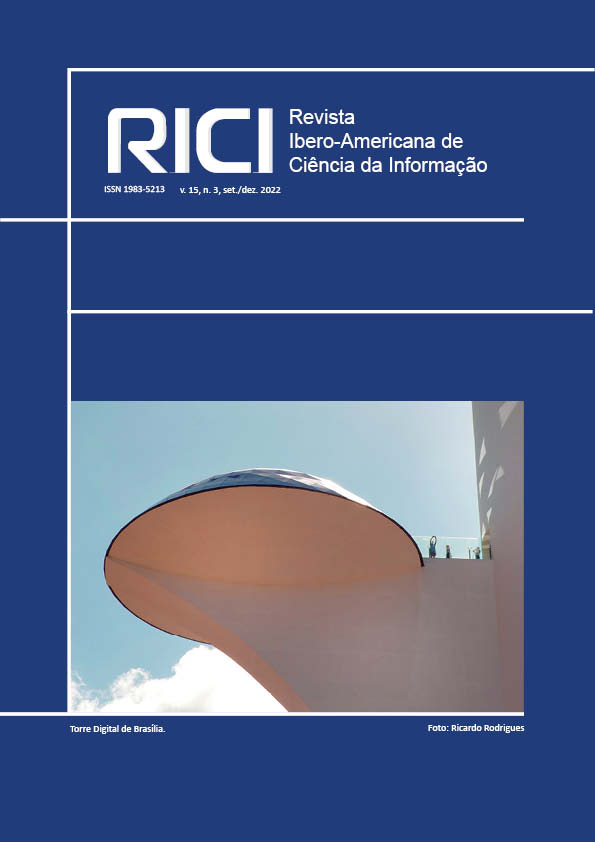Quadro regulatório de enfrentamento às fake news no Brasil: uma análise das propostas legislativas
DOI:
https://doi.org/10.26512/rici.v15.n3.2022.45659Palavras-chave:
Internet, Fake news, Políticas de comunicação e informação, BrasilResumo
O objetivo dessa pesquisa é analisar os projetos-lei que estão tramitando no Congresso Nacional que dizem respeito ao enfrentamento das fake news no Brasil. Especialmente, desde as eleições de 2018, e mais ainda com as eleições de 2022, vem adensando-se o debate sobre o tema bem como o estabelecimento de mecanismos de produção e reprodução em massa desse conteúdo falso com a intenção de confundir os brasileiros com respeito a temas de suma importância para o país, tal como o tratamento para a Covid-19. Para fazer esta análise, usamos como procedimento metodológico a Análise de Conteúdo, de Laurence Bardin (1977), para analisar os 50 projetos-lei, que estavam em tramitação na Câmara e no Senado Federal, até o ano de 2021, destacando nesses projetos os seguintes aspectos: temática; conceito; vocação para a prevenção ou criminalização. Como resultados principais, descobriu-se que a maior parte dos projetos-lei foram construídos a partir do ano de 2020. Também identificou-se que há um consenso com relação ao conceito de fake news, em tais projetos, que diz respeito a notícias falsas com a intenção de causar dano. A maior parte dos projetos analisados estavam ligados ao tema da Covid-19 ou ao tema das eleições, evidenciando como essas questões são sensíveis e devem ser protegidas dos prejuízos que falsas notícias podem causar. Finalmente, a maioria desses projetos-lei não encontra solução para a questão da fake news que não seja a criminalização, outros aspectos que poderiam ser considerados, como educação para prevenção e enfrentamento desse fenômeno, quase nunca são mencionados.
Downloads
Referências
BARDIN, Laurence. Análise do Conteúdo. Lisboa: Edições 70, 1977.
BRASIL. CÂMARA DOS DEPUTADOS. Portal da Câmara dos Deputados. 2020. Disponível em: https://www.camara.leg.br/
BRASIL. CÂMARA DOS DEPUTADOS. Portal da Câmara dos Deputados. 2019. Disponível em: https://www.camara.leg.br/
BRASIL. TRIBUNAL SUPERIOR ELEITORAL. Código Eleitoral. Brasília: Tribunal Superior Eleitoral, 2018.
EMPOLI, Giuliano da. Os engenheiros do Caos – como as Fake News, as teorias da conspiração e os algoritmos estão sendo utilizados para disseminar ódio, medo e influenciar eleições. São Paulo: Vestígio, 2019.
FONSECA JÚNIOR, W. C. Análise de Conteúdo. In: DUARTE, J.; BARROS, A. (Orgs.). Métodos e Técnicas de Pesquisa em Comunicação. 2. ed. São Paulo: Atlas, 2009. p. 280-303.
LOPES, Ivonete da Silva; LEAL, Daniela de Ulysséa. Entre a pandemia e o negacionismo: a comunicação de riscos da covid-19 pelo governo brasileiro. Chasqui. Revista Latinoamericana de Comunicación, [S.L.], v. 1, n. 145, p. 261-280, 21 dez. 2020. CIESPAL. Disponível em: https://revistachasqui.org/index.php/chasqui/article/view/4350
MARCONI, Marina A.; LAKATOS, Eva M.. Fundamentos de Metodologia Científica. São Paulo : Atlas 2003.
MELLO, Patrícia C. A máquina do ódio: Notas de uma repórter sobre fake news e violência digital. São Paulo: Companhia das Letras, 2020.
MENESES, João Paulo. Sobre a necessidade de conceptualizar o fenómeno das fakes news. Observatorio (OBS). n. 1, pa. 37-53, 2018. Disponível em: https://dialnet.unirioja.es/servlet/articulo?codigo=6648894
MENESES, João Paulo. Como as leis estão a definir (e a criminalizar) as fake news. Comunicação Pública. v. 14, n. 27, 2019. Disponível em: https://journals.openedition.org/cp/5423?lang=es
POYNTER. A guide to anti-misinformation actions around the world. Disponível em: https://www.poynter.org/ifcn/anti-misinformation-actions/
SANTAELLA, Lucia. A semiótica das fake news. Verbum - Cadernos de Pós-Graduação, v. 9, n. 2, 2020. Disponível em: https://revistas.pucsp.br/index.php/verbum/article/view/50522
WOLF, Mauro. Teorias das comunicações de massa. São Paulo: Martins Fontes, 1985.
Downloads
Publicado
Como Citar
Edição
Seção
Licença
Copyright (c) 2022 Janara Sousa, Ana Novelli, Giulia Castro

Este trabalho está licenciado sob uma licença Creative Commons Attribution 4.0 International License.
Notas de direitos autorais
Autores que publicam nesta revista concordam com os seguintes termos: Autores mantém os direitos autorais e concedem à revista o direito de primeira publicação, com o trabalho simultaneamente licenciado sob a Creative Commons Attribution License 4.0, permitindo o compartilhamento do trabalho com reconhecimento da autoria do trabalho e publicação inicial nesta revista. Autores têm autorização para assumir contratos adicionais separadamente, para distribuição não-exclusiva da versão do trabalho publicada nesta revista (ex.: distribuir em repositório institucional ou publicar como capítulo de livro), com reconhecimento de autoria e publicação inicial nesta revista. Autores têm permissão e são estimulados a distribuir seu trabalho online (ex.: em repositórios institucionais ou na sua página pessoal) a qualquer ponto antes ou durante o processo editorial, já que isso pode gerar alterações produtivas, bem como aumentar o impacto e a citação do trabalho publicado.
















